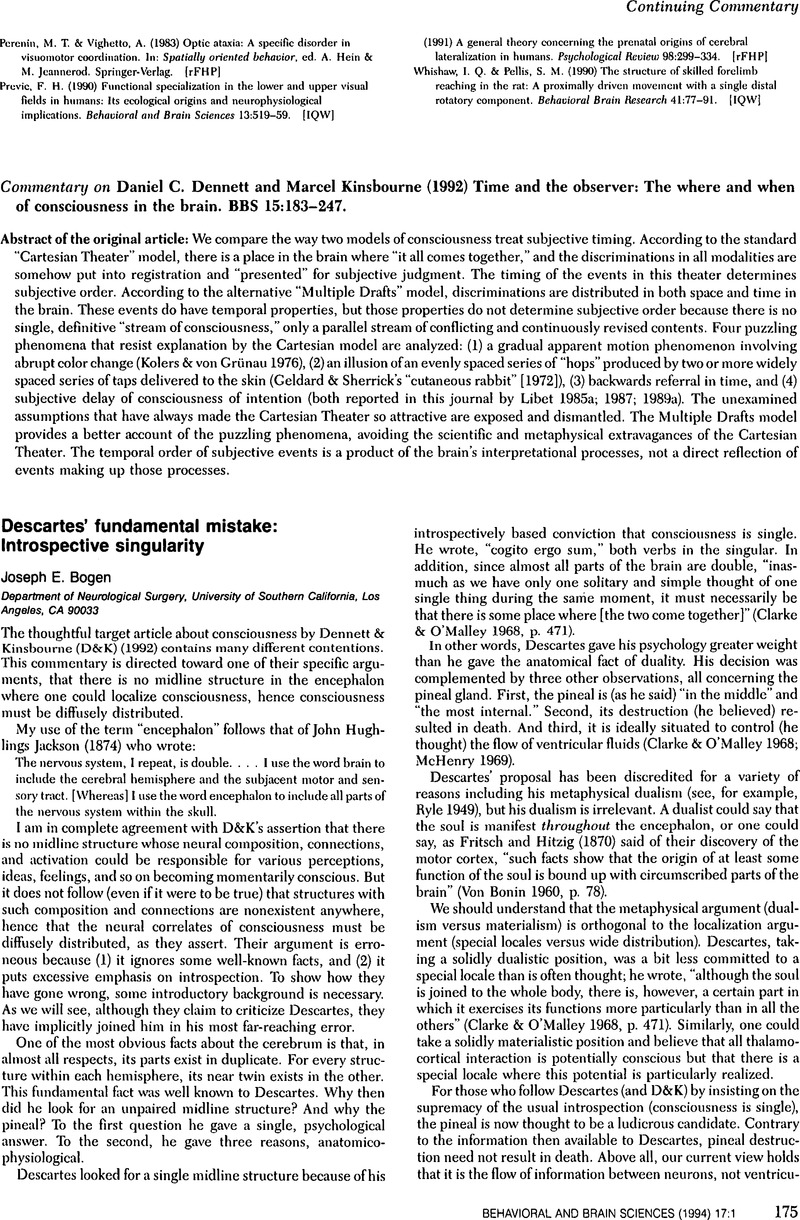Crossref Citations
This article has been cited by the following publications. This list is generated based on data provided by Crossref.
Bogen, Joseph E.
2000.
Split–Brain Basics: Relevance for the Concept of One's Other Mind.
Journal of the American Academy of Psychoanalysis,
Vol. 28,
Issue. 2,
p.
341.



